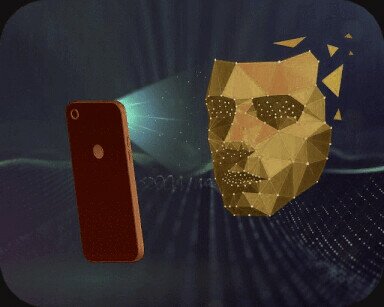Facial recognition systems threaten our privacy. They can track where you go and add that information to the massive amount of information already saved about each of us. Big Brother is watching you and enabled by AI. And when it makes a mistake reading your face, you could end up with criminal charges far worse than when the toll tag system misreads your license plate. Here are several methods for fooling and interfering with facial recognition systems.
Makeup
Facial recognition systems are designed to look for a symmetrical facial structure: two eyes, nose in the middle, horizontal mouth. Anti-surveillance makeup breaks up that pattern. Differently colored eye like patterns above and below the wearer’s eyes are one approach. Geometric patterns like neon triangles around the eyes to essentially hide them is another option. CV Dazzle or computer vision dazzle makeup often involves the hair, too. Imagine long strands of hair intentionally placed in front of the face in unusual patterns. This approach could be combined with makeup to make the human face unreadable to the AI behind facial recognition systems. Unfortunately, people around you will notice you. At least if you’re relying on gems glued to your face and hair extensions, you can claim to be fashionable without getting into trouble where there are rules against covering your face.
Printed Masks
A couple of years ago, an ad showed a grandfather printing off a high quality photo of his daughter’s face to wear like a mask in a bid to calm the crying baby he was watching. The ad was intended to be funny, but the concept is sound. In fact, tests show that high quality printed masks can fool facial recognition systems. 3D printed masks of someone else’s face could even be worn in public. This will look eerie to those who notice the mismatched alignment around the eyes of a cheap and/or poorly fitted mask, but it is enough to go outside and get things done. Higher quality masks with good application techniques might be indistinguishable from a real face in most cases.
Wearing a hat to cover your hair is no big deal. And this approach doesn’t trigger legal repercussions the way a balaclava and hoodie worn walking down the street might. The impact of a dozen people wearing your face remains to be seen, but it could be the modern equivalent to the Guy Fawkes mask.
Plastic Masks
Clear facial masks interfere with facial recognition systems, but you’re still visible to people around you. Clear goggles with LEDs can get in the way of facial recognition, especially if combined with bandanas, hoodies or wigs. Note that simply wearing a surgical mask isn’t enough anymore. Algorithms have gotten good enough to recognize people despite wearing hats, glasses, fake beards and surgical masks. Fortunately, there are products like Reflectacles that help block out the infrared light used to read your face. And wearing these in public won’t draw attention to you.
The Traditional Route
Imagine a sea of women in burqas. It would be hard to tell anyone apart. And that’s the point. More importantly, dressing like this would make it impossible for facial recognition cameras to identify your face. Niqabs would be almost as effective.
Black Bloc is a left wing authoritarian group that organizes large groups of people in the classic “black” outfit. Black hoodies, balaclava masks, bandanas and sunglasses make it difficult to identify someone in the crowd, while the crowd provides additional anonymity. For those seeking to be anonymous, the benefit of this approach is that you probably have many of these items in your closet already and it isn’t suspicious to buy or own them.
A few pioneering artists are fooling cameras by wearing clothing that confuses them. One version is a hoodie with faces on it. Now the camera isn’t sure which one to pay attention to. Another approach is wearing clothing with designs that break up the standard human form. Now the camera doesn’t recognize you as a person in the first place.
****
Photo by Kal Omari 



Comments
Leave a Reply